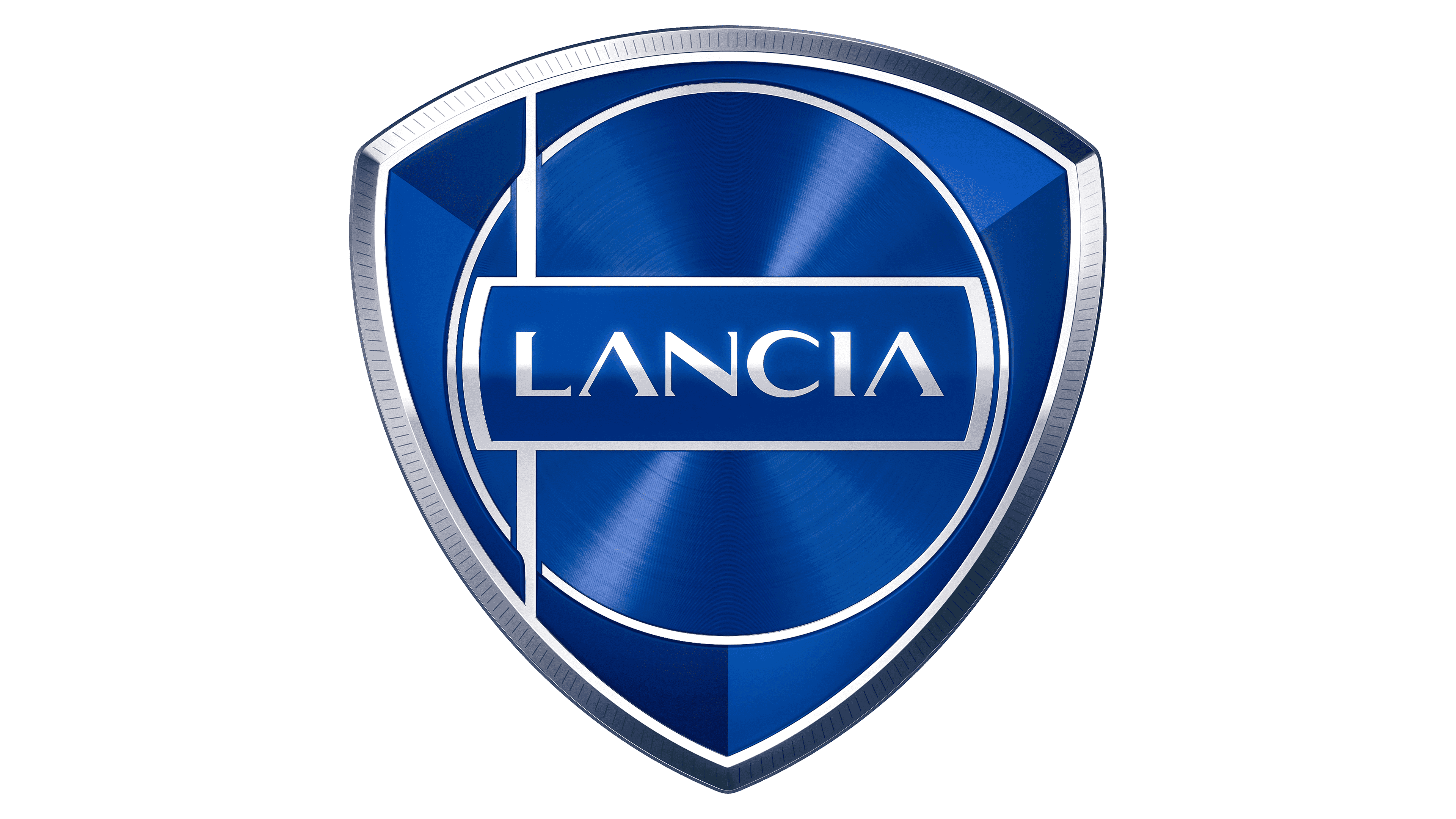A famous Italian car brand called Lancia was founded in 1907 and named after its founder – Vincenzo Lancia. An interesting fact that in Italian “Lancia” also means “a spear” that is why sometimes misunderstandings happen and people believe that exactly this sharp cavalry weapon, gave the name to the brand, although that fact is not true.
Meaning and History
When the company created its logo, it was the steering wheel, the spear that gave the name to the company, the flag with the lettering on it, and the hand valve. The steering wheel is the only element that has survived in the logo to this day.
1906 – 1911
The original Lancia badge, designed for the company in 1906, was executed in a very simple yet strong and elegant style, with the bold and stable white logotype in the uppercase set across a horizontally-oriented black rectangle in a double white and black frame. The lettering was set in an elegant serif font with the letter “L” enlarged and its lines elongated.
1907 – 1911
In the beginning, the company did not have a logo, only a beautiful inscription “Lancia”. The wordmark was executed in gold that makes it sleeker and more elegant.
1911 – 1929
In 1911, appeared a completely new emblem, designed by Count Carlo Biscaretti di Ruffia, a good friend of Vincenzo who also helped him with his work. The logo was a four-spoke steering wheel with an accelerator handle on the right, against the background of which there was a blue flag with a gold inscription “Lancia”, later this font became the corporate one and does not change to this day. The flagpole for the flag is a spear, this element was added for a reason: “Lancia” means “spear” in Italian.
1929 – 1950
In 1929, Carlo Biscaretti decided to place the round logo on a blue triangular shield. The counters became bolder. All other parts remained the same. The blue crest had the same gold outline, as the rounded symbol, and it made the whole image balanced and bright.
1950 – 1957
The Lancia badge, created in 1950, featured the same shape and style as the previous version, but the color palette was changed to a brighter and bolder one — the electric blue and yellow shades made up an eye-catching and memorable composition, with the white lettering and a white circle in the center of the badge adding lightness, freshness, and youth mood.
1957 – 1974
The redesign of 1957removed all the yellow elements from the Lancia badge, and now white was the prevailing color. The crest itself turned completely white, with just a thin blue outline and a very thin blue ring drawn in the center. Inside the ring, there was a solid blue rectangular flag with a blue handle, embedded with an arrow pointing up, andwhite lettering, which fully repeated the typeface of the previous version.
1972 – 1981
In 1972 the Italian automaker decided to come back to its roots, bringing back the original concept of the logo with the white inscription set across the horizontally-oriented rectangular banner. But this time the banner was set in blue and white, with the main part — blue, and a small square element on its right set in plain white. The banner was outlined in thin blue and white frames.
1974 – 1981
Two years later, the company created a refreshed version of the shield badge. It was the same concept, used for the logo from the 1950s, but with refined contours of all elements and a color palette switched to a smoother and very lie and white one. All characters became a bit smaller and this made the whole badge look more delicate and sophisticated.
1981 – 2001
The shade of blue on the Lancia logo was changed again in 1981. The hue got smoother, more blue than purple, and this made the whole badge look fresh and professional. As for all the other elements of the logo, they remained untouched. In this style and color palette, the Lancia logo stayed untouched for twenty years.
2001 – 2007
In 1974, the logo was returned to the blue color of the shield, the four spokes of the wheel, but the image of the elements itself was simplified for better recognition and practicality. That is why the typeface of the inscription “Lancia” was changed. Now all its letters had one size and were executed in a simple serif font with bold straight lines.
2007 – 2022
In 2007, a new logo was designed by Robilant Associati and presented in Geneva. Interesting, that in the new emblem designers replaced the old version of a steering wheel with a chromed two-studded steering wheel. Also, the new badge lost two main features: a spear and a flag. However, despite the latest update companies’ logo is still able to maintain its traditional style.
2022 – now
In 2022 the Lancia badge was redesigned again, and this time the companycreated a strong and modern badge, which brilliantly reflects its growth and progressive approach. The blue in the badge became brighter and gained more gradients and gloss, than any of the previous versions. The circle and the flag are now executed in a super minimalistic way — in thin silver lines with clean contours, and the inscription has changed its typeface to a stable sans-serif with wide characters and smooth futuristic contours.
Emblem and Symbol
It is very honorable that company remains the idea of its original logo. The color palette of the logo is represented in blue and silver colors, which shows the quality, reliability, and loyalty of the brand. The company values the safety and comfort of their customers, and this is very well shown on their logo.
The Legends Sport cars
Lancia Stratos is undoubtedly one of the brightest stars of the world rally. The large-scale production of which took place from 1972 to 1974. This car not only became very successful, but also influenced the development of the entire rally for the next ten years. It was under the influence of Stratos in the 80s that a new group B was formed, where 500-horsepower mid-engined monsters performed, only slightly resembling road cars. After all, he was the first heavy-duty car, originally sharpened for rallying.














